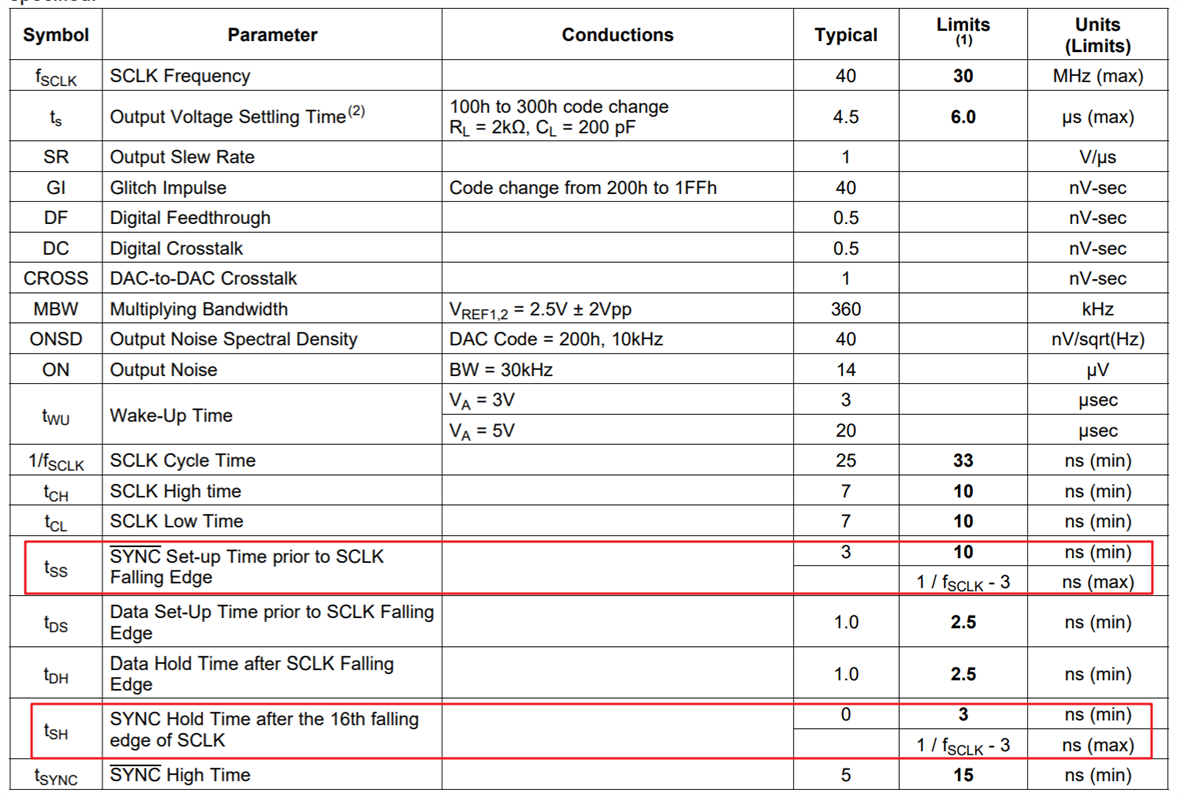Hi Team,
The datasheet says there is limits for tSS and tSH, my questions are:
1. Does the Units(limits) correspond to Typical or Limits? If to Typical, most of the data seems to be reasonable, but how to explain the ts becase 4.5us<6us?
2. For tss, should it be (1/fsclk - 3) or 1/(fsclk - 3)? What's the unit of fsclk in the formula, Hz or MHz?
3. What does "Average Outgoing Quality Level" mean for this table?
Thanks and Best Regards!
Hao


